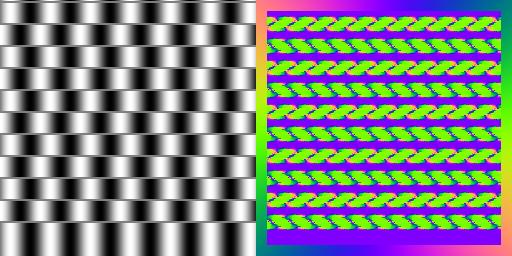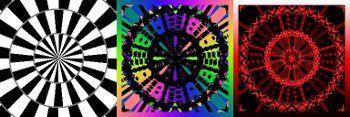A magazine where the digital world meets the real world.
On the web
- Home
- Browse by date
- Browse by topic
- Enter the maze
- Follow our blog
- Follow us on Twitter
- Resources for teachers
- Subscribe
In print
What is cs4fn?
- About us
- Contact us
- Partners
- Privacy and cookies
- Copyright and contributions
- Links to other fun sites
- Complete our questionnaire, give us feedback
Search:
Getting an angle on the brain

Your brain is doing some amazing calculations as you read these words. Not only are your recognising the letters, the upright and top cross of the 'T', but you are also understanding what they mean. Imagine if you could build a computer with the same kinds of skills? Computer Scientists are looking at how our brains work to build better machines. One area where people are far better than current technology is in seeing. Around half your brain is estimated to be involved in processing some type of information from your eyes. It takes a lot of computing power for us to see and understand what we see, whether its faces, letters or even a cafe wall (but more of that wall later).
Bits of Brains

Scientists have recently started to get a better understanding of some of the early stages of vision, but seeing is a complex process and there is much more to discover. Your visual cortex at the back of your brain takes the nerve signals from your eyes and starts to calculate with them. From this calculation some of the basic 'building blocks' of seeing are created. We see things moving and in colour, and we also know very accurately how the parts of the scene we are looking at slope. Slopes, or spatial orientations, are a very important part of the early visual calculations. Slopes tell us something about an object, a rectangular table for example has straight edges, and slopes also tell us something about how far an object is away and how it's positioned in the scene. Think of the table again. If you are looking straight down on it all the sides are parallel. If you are looking from a distance the sides seem to slope. It's called perspective and was one of the key discoveries that made Renaissance art in the middle ages so realistic.
New Directions
We can start to build computer models of how humans perceive a whole range of properties of the scene like movement, colour, or slopes (orientations). When it comes to slopes we know that in your brain you measure the orientation at each point in the scene at a number of different angles, rather than just at one or two. This brain structure is called an orientation column, and is probably there to help our computation be more robust. Modelling these orientation columns, and building a computer model as close to the biology as possible allows two things.

First we can see if our model performs like a human would. We can predict from our model how a human would see a particular pattern, then test with a real human to see if we were right. If we were, then our model got something right, and we have a better understanding of how our brains compute. Secondly since the model is mathematical it doesn't matter if its run on biological 'stuff' like your brain, or on electronics 'stuff' in a computer, so we can build computer vision systems with human-like abilities.
Useful illusions
So where does the cafe wall come into this? If you look at a brick wall you can sometimes get a strange effect. The straight lines of the mortar can sometimes look sloped. It's an optical illusion. Your brain is making a 'mistake' in its slope calculations. A mathematical model developed by researchers at Queen Mary suffers the same sorts of mistakes. It miscalculates like a human does, and in effect it is 'seeing' the illusion too...and because an optical illusion is an unusual miscalculation for our brains to make, the fact that the model makes the same mistakes is useful evidence for us to say that the model somehow has caught the essence of the human brain calculations. We have built a bit of a brain and can move use it for many different computer vision applications. The lesson here is that biology has found some great solutions to hard engineering and computing problems; it would be a shame not to use them.




